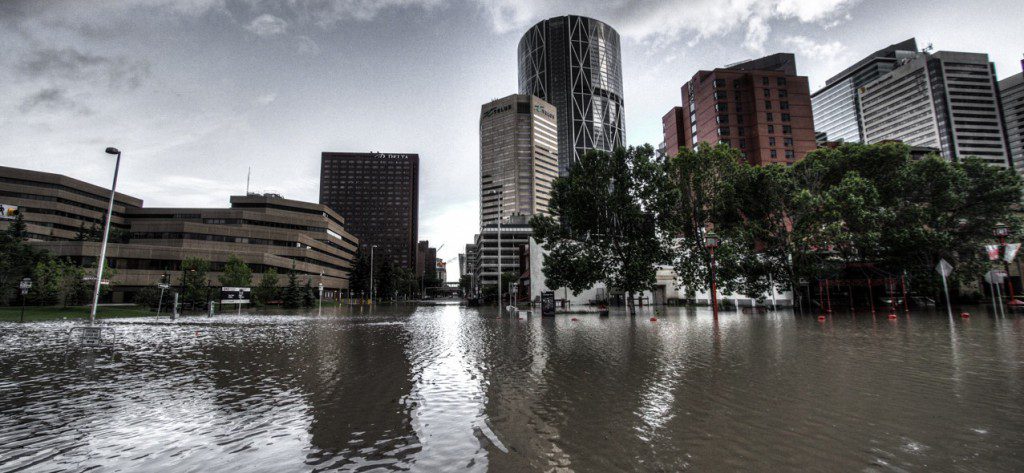At Environmental Defence, we work hard to safeguard Canada’s water as well as our shared climate. This World Water Week, we wanted to take a moment to discuss how our changing climate is impacting water relied upon by millions of Canadians. Here are a few examples of how climate is already affecting water and our way of life in Canada.
Disappearing glaciers
One of the most visible and troubling effects of a warming climate is the rapid melting of mountain glaciers. In Canada, most of our glaciers are found in the mountains of Alberta and British Columbia. They’re the primary source of surface water for some of the driest parts of Canada, the southern prairies of Alberta and Saskatchewan. Essentially all of the major rivers in the Saskatchewan river basin that flow east across Alberta and Saskatchewan originate from melting snow and glaciers in the Rockies. Rising temperatures are melting this ice and snow at an increasing rate, which could have serious consequences.
In a changing climate, we expect less predictable and more extreme weather. And we’re now seeing higher intensity and frequency of extreme temperatures and rain, which has led to more severe flooding, as well as more extreme droughts in recent years. The 2013 Alberta floods were the most damaging ever recorded in the province – displacing more than 100,000 people, and causing an estimated $1.7 billion in damage.
Perhaps even more troubling, as glaciers continue to melt at an accelerating pace, eventually many of them will disappear completely. Glaciers act as a sort of water tower for the rivers below. In winter, they store up frozen water, releasing it over time as temperatures rise in the dry, hot parts of the summer. This melt-water is a source of drinking water and the lifeblood for agriculture, the basis of the economy for hundreds of communities downstream. When our mountain glaciers shrink and disappear, the seasonal melt-water in many rivers will be far less reliable for those living downstream. If low water levels in rivers combines with extreme droughts, the impacts for both agriculture and communities across the prairies would be severe.
Shrinking Great Lakes
For those living in the Great Lakes region, the threat of running out of water may look less likely but climate change is expected to have major impacts on millions living here.
A warmer climate is already reducing the ice cover over the Great Lakes every winter. There has been a 71 per cent reduction in the extent of Great Lakes ice cover between 1973 and 2010. In the winter, lakes without ice cover lose more water to evaporation. This effect can move a lot of water, as anyone who lives in a community that routinely gets covered in lake effect snow can tell you.
In the summer, while it’s predicted that a warmer climate will bring more rain, warmer temperatures also mean more evaporation. On balance, this means more water leaving the lakes than entering them. In the long run, warmer temperatures in both winter and summer are expected to lower water levels in the Great Lakes. Lower lake levels would damage ecosystems and reduce water quality. Low levels are also bad for the economy, impacting shipping, hydro electricity generation, and industries that serve people who spend time on the lakes either on the shore or in boats.
Cracks in Transportation
We often forget that water is critical to getting around in many parts of Canada. As a northern country, this is especially true for communities who rely on lakes and rivers to freeze so they can become passable. For many remote northern communities and First Nations, winter ice roads are the only direct link to the rest of the country and are critical infrastructure.
The warming effects of climate change are multiplied the further north one travels. In Canada, scientists estimate that on average our temperatures are warming at twice the average rate as is being felt across the globe. This rate is even more extreme in the high arctic, where average temperatures are already degrees above the warming felt elsewhere. All that warming is impacting winter roads. The amount of time each year the roads are open is shrinking, and the roads are becoming more dangerous. In the future, warming could make some roads no longer usable. Relying on airplanes to fly all people and cargo into these communities can be prohibitively expensive and further raise the cost of living.
These few examples are just the tip of the melting iceberg of the impacts that a warming climate will have on water in Canada. After centuries of dumping greenhouse gasses into our atmosphere, we know that some amount of warming is inevitable. However, the amount of global warming, and the severity of its impacts on our water and our future, is still in our control.
To change the course of the future, we must act quickly to cut our climate pollution as quickly as we can over the coming years by shifting to a clean economy and away from fossil fuels. We must also invest in measures to adapt to the warming we’re already experiencing, so we can be better prepared for floods, droughts, low water levels, and damage to our infrastructure.
The cost of inaction is far greater than the costs of tackling this problem head-on. We can’t take our water or our climate for granted.









